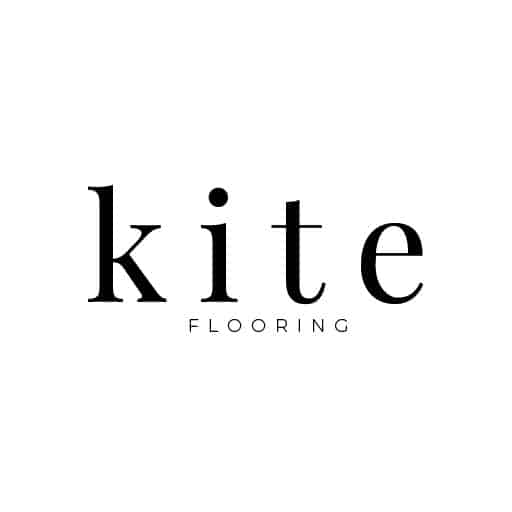When we launched our business in 2018, we were surprised by the number of flooring strategies, even from professional floor buyers. Often these were not thought through; they were either price-led, “what’s your cheapest engineered wood floor?” or they were born out of a relationship or product a client had previously used.
Key questions which buyers struggled with included –
- When to use laminate and when to use engineered wood? Should they use Luxury Vinyl Tiles (LVT)?
- What colours should they use? Darker finishes, light or natural oak tones?
- Should they use straight-boards or patterned floors like Chevron or Herringbone?
- Who should do the fitting? A specialist flooring contractor? Or a building contractor?
Often they would forget the service aspects of supply; so, how and when it should be quoted and delivered and how they would specify additional extras such as underlay or transition bars.
One of our clients is a business called flyp (https://flyp.co/). flyp works with property vendors to renovate their homes. It’s a revolutionary business model that involves no upfront commitment from the vendor. flyp funds the renovation of the property, which is typically done over 10 days and then relaunches it to the market. Whilst the property is being marketed, they monetise it through short-lets which funds a good part of the renovation. When it comes to selling, they typically achieve a 10% uplift in the sales price, with 95% of homes being under offer in two weeks. It’s an attractive business model; the vendor gets a sold property, for a price they are happy with, flyp makes revenue from the short-let income and the uplift in the sales price. Key to flyp’s success is the speed, cost, and ultimately finished product of a property; they need to make buyers fall in love with the homes they work on and they claim this happens within “the first seven seconds” of a viewing!.
Flooring is a key part of flyp’s strategy, as inevitably, many properties need a flooring upgrade. To help answer some of the questions our clients have struggled with, we thought we’d look at their strategy;
What flooring do they use?
flyp uses a blend of laminate and engineered wood. The laminate is hard-wearing, often coming with a lifetime residential guarantee and flyp opt for light coloured, straight board finishes. This allows them to contrast feature walls and bold coloured furniture.

The Kilburn Retreat
Peach walls contrasting with the grey sofa. Bloom Light Natural Laminate Flooring.


The heart of Fulham
Laminate flooring, contrasted with bold feature walls.

In prime areas, flyp opts for straight board, engineered wood. Whilst Laminate is great, engineered wood has a deeper colour and the texture of real wood feels more grainy. Moreover, buyers of these properties expect a prime specification to sit with the price tag. Again lighter colours are chosen to contrast with flyp’s bold colour choices. The boards are either rustic, so with knots, or have a slight texture to them.
flyp doesn’t go for the “cheapest engineered wood”. This is a common strategy from some property professionals. There are cheaper engineered wood products in the market, such as lacquered, “three-strip” boards, but in the flypdesigners’ view, they don’t have the depth of colour that a slightly more premium engineered board has. For them, you either opt for the light oiled, engineered wood boards, or the cheaper laminate.

Bermondsey Square Escape
190mm, 15mm wide engineered wood board. Rustic grade. Our Lewis finish from the Newington Range.

Queensway Escape
Lewis Textured – Here a slightly textured finish was used to provide a contrast with the wood paneling. This is perhaps our favourite floor.

What about Luxury Vinyl Tiles (LVT)?
LVT tiles are a great product. They’re quick to fit, realistic, and virtually indestructible. But so is a good quality laminate floor. There are benefits to LVT; such as it’s water-resistant, it gives off less sound when walked on, and can be fitted without underlay. But in flyp’s use case, these advantages don’t outweigh the more premium price point. For flyp, it makes sense to either simply install a floor that just works, the laminate, or a floor that will wow the buyer; the engineered wood.
What about the supply chain?
For flyp, time is of the essence. Every day spent renovating a property, is a day of missed rental income. For this reason, they need to choose reliable floors that are quick to fit and can be delivered quickly, at specific times. They also need to make sure that when the floors are delivered, there is a sufficient quantity, and that all the accessories needed, such as underlay, beading, door bars, and trims are delivered at the same time.
It doesn’t work for them to have products delivered through larger online providers; not only can they not fulfil the delivery commitments, but they also rely on the client or contractor to provide measurements and an inventory of extras. Getting this information can take time, and slow down the process.
In terms of fitting, the floors have to be easy to fit as the building contractors do the fitting; so no chevron or herringbone. Also, as fitting the floor is normally one of the last tasks to carry out, it is more efficient for the building contractor to arrange this, rather than flyp having to coordinate with further trades. Of course, with any building project, plans change, so the supplier needs to be constantly in touch with the contractor, making sure the floor is only delivered when they are ready.
In Summary
So with flyp the strategy started with range, “We worked with Kite to choose floors to help buyers fall in love with our renovations, at a price point that worked for our business model”. Jess Knight, Head of Design for flyp.
But after that, the strategy was about minimising renovation time. This meant fast lead times, site surveys, and flexible, timed delivery slots.
Combining these factors meant flyp had a flooring strategy they could scale.
All images courtesy of flyp – www.flyp.co – and their sister business, Stay Beyond – https://staybeyond.com.
















